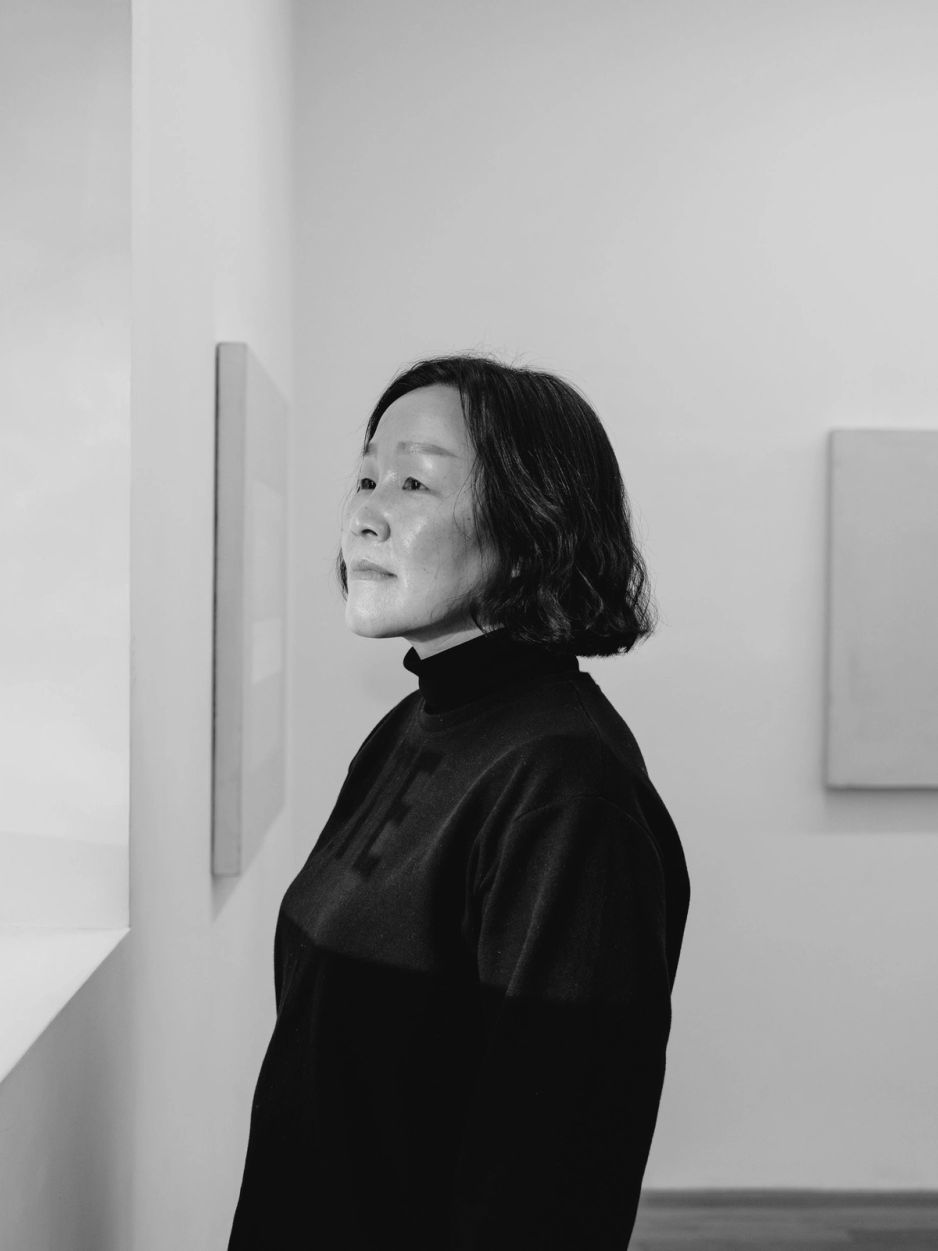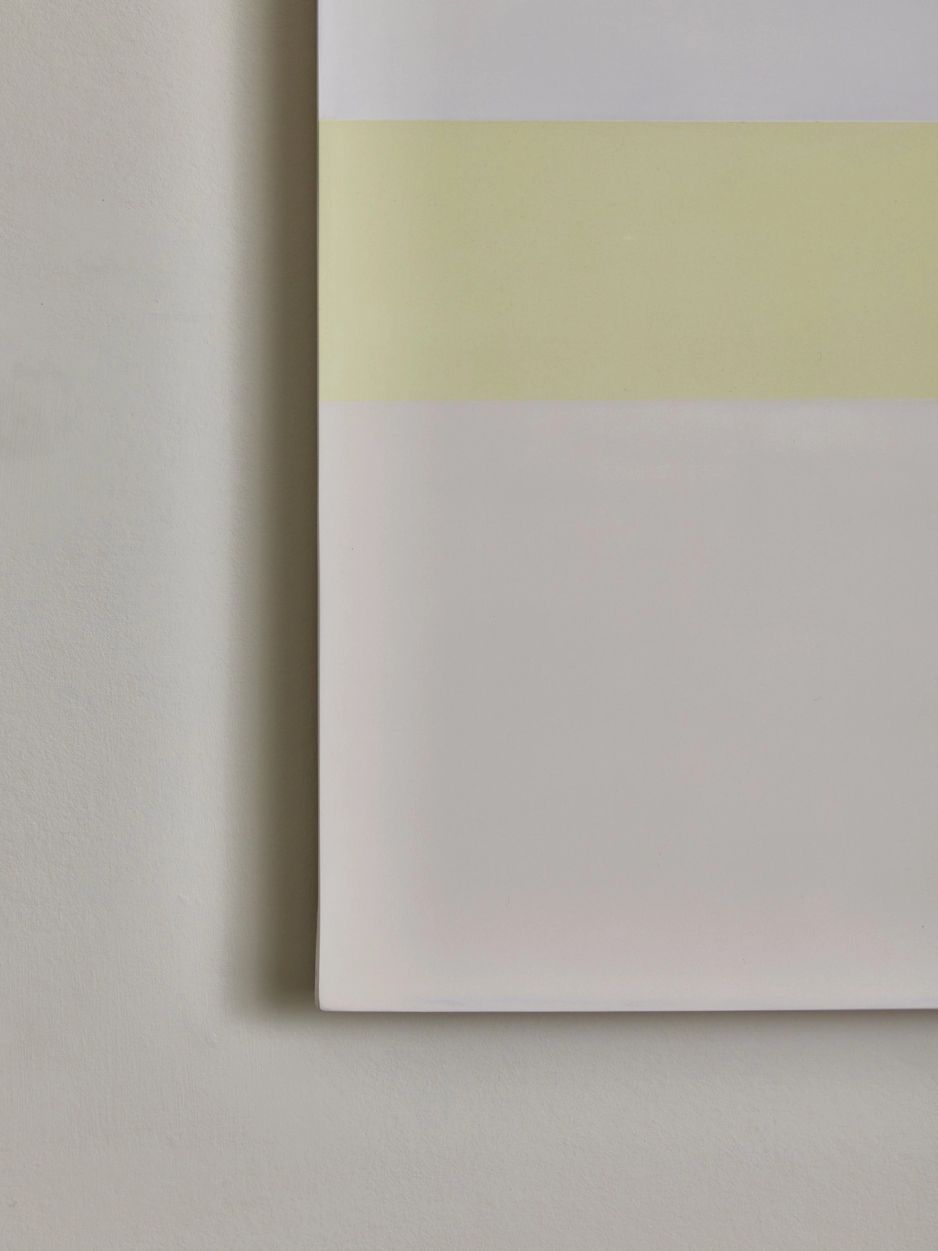Gallery Representation of Mikyung Kim
Korean artist Mikyung Kim crafts tranquil paintings with painstaking care. Each canvas is composed of multiple layers of acrylic paint, each sanded by hand, softening the tone, texture and brush strokes to create a subtle, vibrating surface. The majority of her canvases involve around 20 or 30 layers, and sometimes as many as 60 to 70. They often begin with a dark, earthy tone, before progressing to lighter hues. “It is like building a structure on a two-dimensional surface: I start with the earth, and move towards the sky,” says Kim. “The process itself involves a great deal of anticipation until something finally emerges that can be shared. It is a quiet but intense meeting between my self and the surface of the canvas. The accumulation of numerous small gestures allows me to experience a new world and feel uplifted.”
Kim was born and grew up in Seoul, and moved to New York to study at Parsons School of Design in 1997. She began her art practice in New York, before moving back to Seoul in 2009, where she has lived and worked since. Her work has been shown in many solo and group exhibitions in Seoul and New York, as well as other cities in South Korea. Her pieces also feature in the permanent collection at the Datz Museum of Art in Gwangju.
Much of her work incorporates fine-tuned geometry, with soft straight lines dividing fields of colour, and rectangular forms contrasting with one another, sometimes with only the faintest of difference in tone. Her palette is inspired by moments in everyday life, such as the ever-changing sky, beams of light entering her studio windows, or Goryeo and Joseon dynasty celadon vases viewed in a museum.
Kim’s paintings are deeply meaningful to her on a symbolic level. Much of her work concerns the figure of her mother, and the inspiration she finds in bojagi – traditional Korean wrapping cloth. “When I was young, my mother used a lot of bojagi for organising things at home, as we did not have much furniture,” says Kim. “When I was living in New York, I revisited Seoul, and found shops specialising in traditional bojagi. I was amazed at the beauty of them. I began to think about the state of mind the makers must have possessed when they were crafting them. They are so precious. Unfolded, they are flat, weightless, and have the form of a simple grid. But if we wrap things in them, the cloth adopts the shape of the objects within, without revealing the thing itself. I began using the grid shape of the unfolded bojagi in my works. Over time, the shape developed its own meaning. The grid form, to me, is like a cell of the mind, a piece of thought, a component of time. It prompts me to contemplate the origin of the mind, and by extension, the origin of human beings. I imagine the flat, grid shape of my canvas is like an unfolded mind, which can collect other people’s minds, and in doing so, connect with them.”
Words
- Ollie Horne
Photos
- Toby Mitchell


